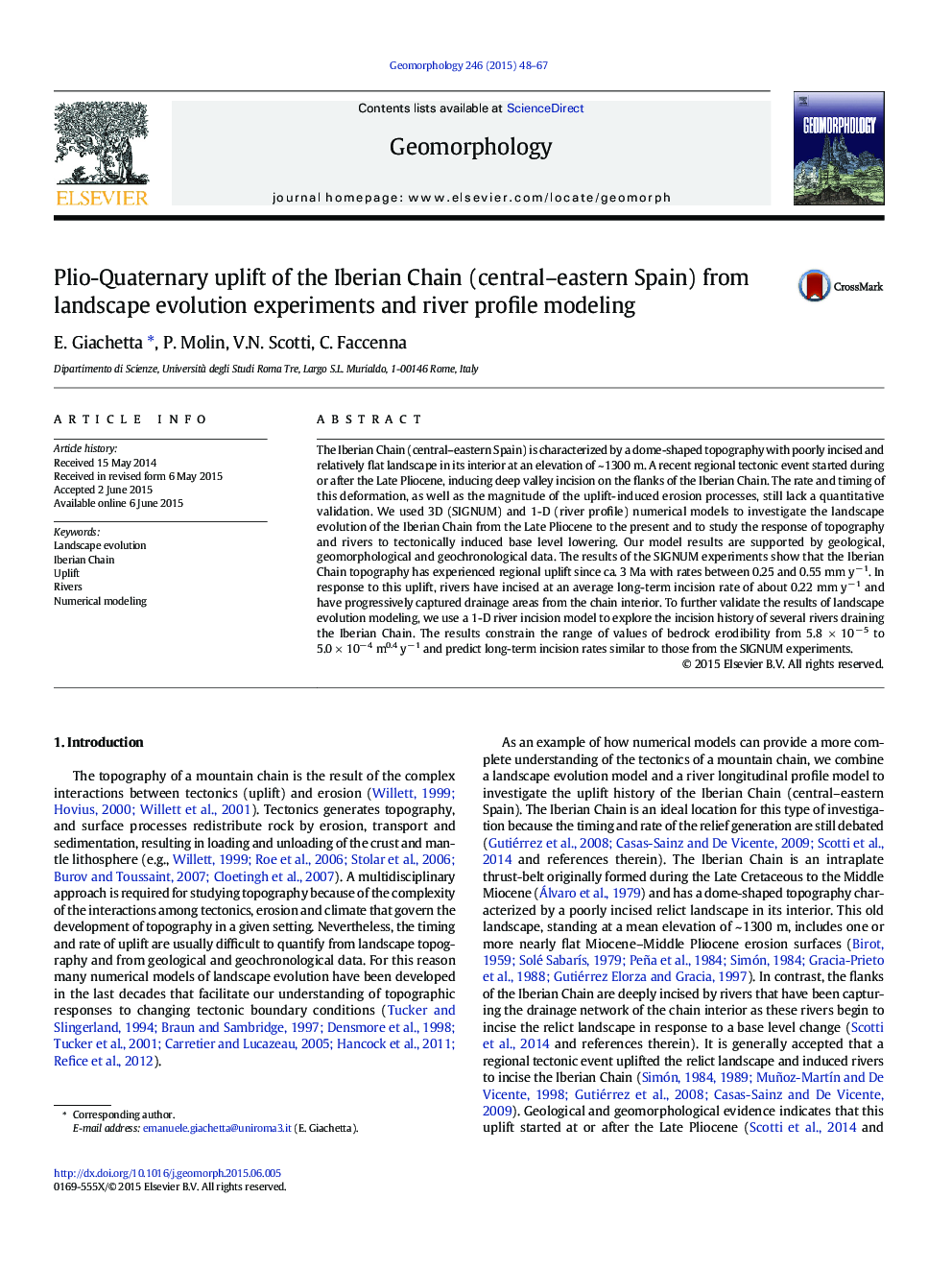| کد مقاله | کد نشریه | سال انتشار | مقاله انگلیسی | نسخه تمام متن |
|---|---|---|---|---|
| 6431904 | 1635403 | 2015 | 20 صفحه PDF | دانلود رایگان |
- We investigated the Plio-Quaternary landscape evolution of the Iberian Chain (Spain).
- Geomorphic responses to tectonic input have been tested by numerical modeling.
- We integrated geological, geomorphological and chronological data in SIGNUM model.
- We modeled the profiles of rivers draining the Iberian Chain.
- The Iberian Chain underwent a regional input (0.25-0.55Â mm/y) started at about 3Â Ma.
The Iberian Chain (central-eastern Spain) is characterized by a dome-shaped topography with poorly incised and relatively flat landscape in its interior at an elevation of ~ 1300 m. A recent regional tectonic event started during or after the Late Pliocene, inducing deep valley incision on the flanks of the Iberian Chain. The rate and timing of this deformation, as well as the magnitude of the uplift-induced erosion processes, still lack a quantitative validation. We used 3D (SIGNUM) and 1-D (river profile) numerical models to investigate the landscape evolution of the Iberian Chain from the Late Pliocene to the present and to study the response of topography and rivers to tectonically induced base level lowering. Our model results are supported by geological, geomorphological and geochronological data. The results of the SIGNUM experiments show that the Iberian Chain topography has experienced regional uplift since ca. 3 Ma with rates between 0.25 and 0.55 mm yâ 1. In response to this uplift, rivers have incised at an average long-term incision rate of about 0.22 mm yâ 1 and have progressively captured drainage areas from the chain interior. To further validate the results of landscape evolution modeling, we use a 1-D river incision model to explore the incision history of several rivers draining the Iberian Chain. The results constrain the range of values of bedrock erodibility from 5.8 Ã 10â 5 to 5.0 Ã 10â 4 m0.4 yâ 1 and predict long-term incision rates similar to those from the SIGNUM experiments.
Journal: Geomorphology - Volume 246, 1 October 2015, Pages 48-67
